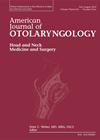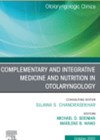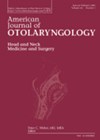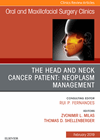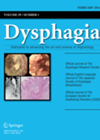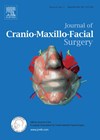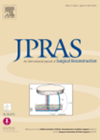
Journal Reviews
Does transoral robotic surgery improve outcomes among patients with head and neck cancer of unknown primary?
A tonsillectomy and tongue base mucosectomy is becoming increasingly accepted as the optimal surgical intervention to aid in identifying the primary source of a p16+ / HPV-related squamous cell carcinoma (SCC) of unknown origin, given that this disease almost exclusively...
Make food thy medicine!
This is a useful paper emphasising how diet affects health and various ENT conditions. We have known for many years the power of food as medicine. We also know that what we eat can affect our bodies in multiple ways...
How do objective ratings of swallowing compare with patient-reported dysphagia QOL measures in the head and neck cancer population?
Swallowing may be assessed by a comprehensive battery of tools including instrumental/objective assessments, clinician-rated measures and patient-reported measures. The authors of this paper use secondary analysis to explore concordance between videofluoroscopy and a patient-reported dysphagia quality of life (QOL) measure....
Prophylactic gastrostomy tubes in advance of chemoradiotherapy for advanced head and neck malignancies – are they worthwhile?
It is well recognised that radical chemoradiotherapy (CRT) for head and neck cancers can significantly affect swallowing, especially if radiotherapy is delivered to the hypopharynx and/or both sides of the neck. As such, prophylactic gastrostomy tubes are often advocated in...
From a dysphagia clinical trial to a multidisciplinary head and neck clinical pathway – the road to implementation
This paper describes the barriers and facilitators to establishing a structured and coordinated multidisciplinary care pathway for patients with head and neck cancer at a medical centre in the USA. The initiative was set in motion by the roll out...
Perioperative management of the head and neck cancer patient
The perioperative care of patients with head and neck cancer is complex and requires significant preoperative planning and patient education. The issues include analgesia, antibiotics, stoma and wound care, general and chest physiotherapy, thromboprophylaxis and nutrition. This article provides a...
Grading dysphagia as a toxicity in treating head and neck cancer
Common Terminology Criteria for Adverse Events (CTCAE) is a system used by clinicians to grade the toxicity of oncology treatments in a standardised manner. Dysphagia is perhaps the most common long-term toxicity of head and neck cancer treatment. Currently, a...
Less pain more gain: impact of prophylactic gabapentin on swallowing outcomes in head and neck cancer patients undergoing radiation treatment
Patients planned for chemoradiation to the head and neck are usually advised to expect some pain and soreness during their treatment and that pain relief will be offered as and when it is required. Uncontrolled pain and mucositis affect oral...
Another paper advocating resection templates
Resection in the head and neck region leads to complex defects with significant impairment in function. Reconstruction is even more difficult and to improve the accuracy of both resection and reconstruction a number of aids are used. With the improved...
Multiple free flaps for head and neck cancer
Most patients with advanced head and neck cancers now undergo microvascular free flap reconstruction. This is mainly as flaps facilitate complete tumour and margin removal by providing reliable wound coverage and better restoration of form and function. However despite this,...

